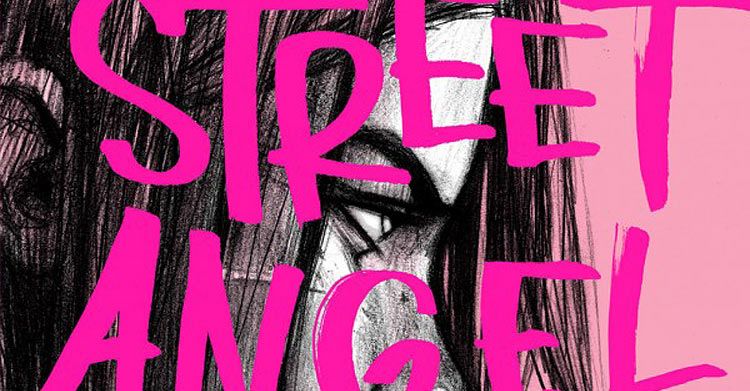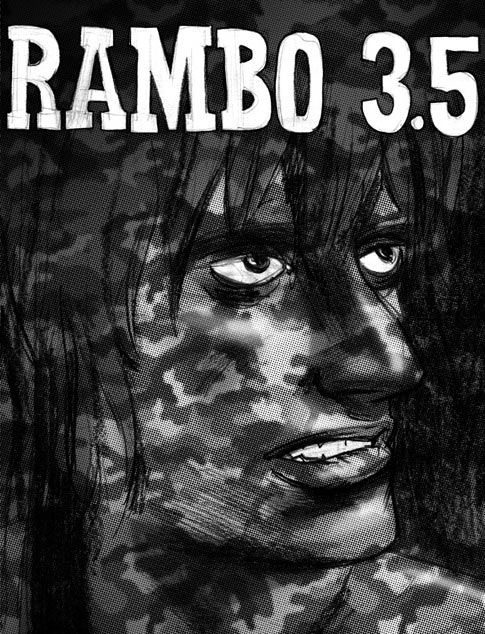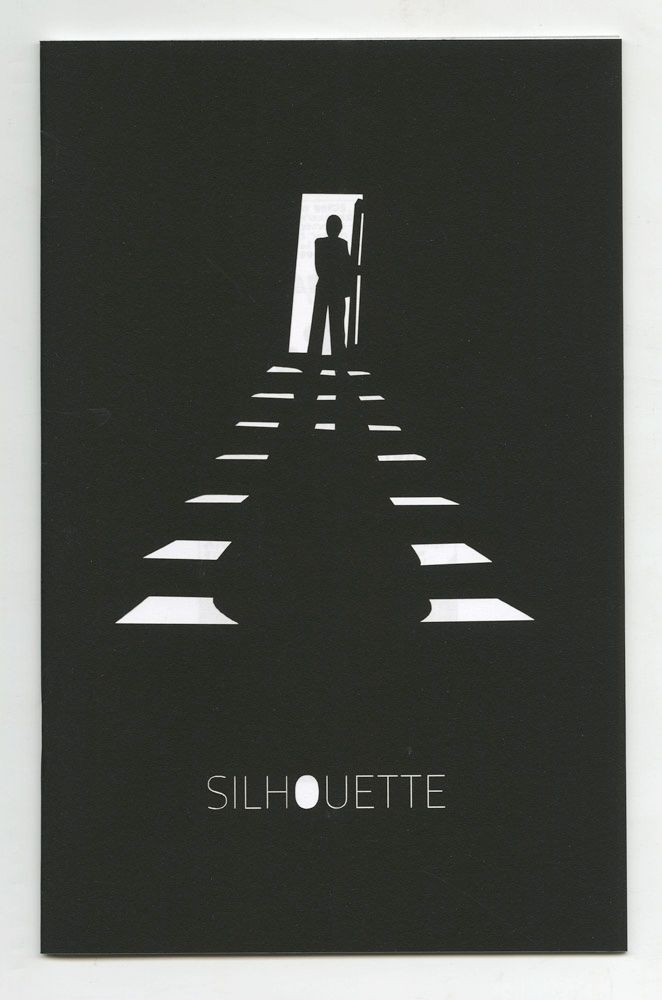In a subdued but illuminating panel Sunday afternoon at Comic-Con International, show guest and acclaimed cartoonist Jim Rugg offered up an overview of his entire career. The creator of indie comics hits like "Afrodisiac," "Supermag" and the resurgent "Street Angel" offered up not just a timeline of how his comics making has evolved, but also a look at the way design, illustration and printing techniques have driven his work in the medium.
Rugg got his start the way many alt-comics practitioners do -- in the world of zines. But aside from his self-published efforts, the artist also has a history of producing work for art galleries -- "mostly work inspired by pop culture" -- which contributed to him taking a position as a teacher at the School For Visual Arts where he contributes to the Visual Narrative MFA which covers comics, film, video games and other disciplines that combine the artist and author into one role. Rugg's other major public effort is co-hosting the "Tell Me Something I Don't Know" podcast for Boing Boing.
Covering his earlier career, Rugg described himself as a self taught artist who came to comics making thanks to book like Scott McCloud's "Understanding Comics," Will Eisner's "Comics And Sequential Art" and the Stan Lee/John Buscema effort "Drawing Comics The Marvel Way." "This stuff was very influential to my development as a cartoonist," he said. "I continued [over the years] to make comics on my own...[though] anyone I can get feedback from, I appreciate."
15 years ago, Rugg released his own early mini comics like "Ultimate James" -- a biographical effort about "Blade Runner" actor Brion James -- and the "Outfitters" series. Even these early efforts, sold at conventions like SPX, showed off Rugg's interest in design by changing in form and presentation from effort to effort. "What's nice about a mini comic -- especially for a younger artist -- is that you can see your work in print, but you don't have to produce too many of them," he said.
One of the last mini comics Rugg made during this era was "Street Angel" -- the story of a skateboarding ninja-fighting homeless teen. "When 'Street Angel' sold out, I realized that something was different. I'd gotten better or people just responded to the character or something," he said. And so he and co-writer Brian Maruca took the story out as a series pitch to various publishers, eventually landing with Slave Labor Graphics. "They were the first company we thought of...and they said yes."
The standard format comic version of "Street Angel" arrived in comics shops with a dual design trick to entice readers. Rugg explained that after looking at walls of comics on sale in the current marketplace, he decided to make every cover pop out with a dominant pale pink color scheme -- a tone rarely seen in comic shop. Additionally, because he was making a creator-owned indie comic with no advertisements, Rugg was able to use his back cover and over non-story elements to his advantage. "I could do whatever I wanted," he said. "And so I would draw different versions of Street Angel for each back cover." Each one was an homage to other comic artists including Jim Lee and "Little Orphan Annie's" Harold Gray.
The response to "Street Angel" was immense, bringing Rugg's work to the attention of the industry and earning accolades such as the original art for his "Down In The Dumpster Blues" issue being accepted into the National Archives.
The success of that project led the artist to his next gig, drawing "The P.L.A.I.N. Janes" for Young Adult writer Cecil Castalucchi at DC's short-lived Minx imprint. While the two-volume series about teenaged guerilla artists wasn't a massive commercial success, it did empower Rugg to move forward in comics. "I had a day job as a graphic designer, but I quit it around the time of 'P.L.A.I.N. Janes' because I was getting more comics work than I had time to do," he said. "My dream was to become a comic book artist, so it was time to take the plunge and go for it. That means I started doing a little more work for hire."
That work included "One Model Nation" -- a Rock N Roll graphic novel written by Dandy Warhol's frontman Courtney Taylor Taylor. Though it wasn't his own project, Rugg desribed the book as "a very good experience, similar to 'The P.L.A.I.N. Janes.' I enjoy collaboration with writers and editors. It's a way for me to learn more about my craft." The "One Model Nation" project also allowed Rugg to formally change his approach. Since the high profile writer meant the book would draw some non-traditional comics readers, the artists designed the book with a standard grid layout for easy visual access. "That's really a very easy way for people to read and understand comics. My wife is not a big comics reader and does not understand comic books and says they're often confusing. So by building the story as a series of gridded pages, I through it would be the way for non-comic book readers to be able to quickly get into the book," he said.
Later came perhaps Rugg's biggest book since he broke out with "Street Angel" -- the Blaxploitation homage "Afrodisiac." Co-writen again with Maruca and published by AdHouse Books, the volume was a hit in comic shops in 2010. Rugg credited AdHouse's similarly design-happy publisher Chris Pitzer with a lot of that success. "We're both kind of obsessed with the book as an object," he said noting that the production values on the hardcover from printing techniques to a suggestively spot-varnished cover while the book's interiors were a combination of 1970s action films and superhero comics. Rugg listed his influences as including Blaxploitation films like "Dolemite" and "Super Fly," crime novels by the likes of Chester Himes who did "The Real Cool Killers" (starring Coffin Ed Johnson and Gravedigger Jones) and Iceberg Slim, who wrote "Pimp," as well as '70s Marvel Comics like "Luke Cage: Hero For Hire." Rugg also drew considerable influence from Dawud Anyabwile's "Brotherman Comics" and "The Real Deal" anthology which he described as outsider art comics.
The book morphs in style as the character of Afrodisiac moves through the years in the graphic novel. "I felt there was a gap in comic history, and I was going to fill it with this book," he said of his hopes to spotlight this variety of lost work through his homage. He noted that using Moby Dick in the book may seem crazy until you realize that DC Comics did the same move as a serious crossover in the '60s.
In recent years, Rugg has continued his dual path of higher profile work for hire gigs and more idiosyncratic zine work. On the former front, he drew issues of Dark Horse's "The Guild" tie-in to the popular Felicia Day web series before shifting to "a frenzied work mode" which led to the ultra-violent zine "Rambo 3.5" which unpacks the Sylvester Stallone character's revenge for 9/11 as dreamed in the mind of George W. Bush. The artist has also done more and more ballpoint pen sketchbooks, freelance illustrations, an album cover for the "Tron 2.0" video game soundtrack and art shows as well as his newsprint zine of old comics ads and a newer zine of all silhouette panels from classic comics made with Jasen Lex. Rugg noted that he annotates these efforts, which borrow imagery from other works, as he considers the zines a form of comics criticism as much as they are art projects.
Rugg took readers through multiple examples of his work-intensive creative pursuits of late, explaining how he plays with different printers and paper weights in order to properly replicate the old style of comic printing as well as making animated GIFs based on many, many repeated drawings that he varied slightly to create the motion effect in photoshop.
His most recent work has included the one-man anthology "Supermag" which combined Rugg's love of '90s magazine design (a subject he studied in college) with many short comics projects to make what he joked was "a pretty uncommercial idea." He offset that with the recent AdHouse hardcover edition of "Street Angel" which includes "one of my favorite things I've ever done" in the new pale pink cover which includes a book spine highlighting a switchblade image.
And of course, his other comics work rolls on including pages for the Joe Casey continuation of Jack Kirby's "Captain Victory" and BOOM!'s "Adventure Time" and covers for projects like "G.I. Joe/Transformers" and "Prophet" while also aiding in projects from friends like Ed Piskor's "Hip Hop Family Tree" and Jason Karns' "Fukitor."
For the future, the artist said he'll continue to work on a variety of projects including a new short story with Joe Casey for "Dark Horse Presents" which Rugg with draw and color. "After I finish up the Jason Karns collection [as designer], my plan is to work on a series and see what I can finish in a year. It's sort of one of those bucket list items. A lot of my favorite comics were created as a series, so I want to try that, though it will be a very different creative process working with those types of deadlines and making... I don't want to say 'compromises.' But your decision making is very different when you're looking at deadlines and shipping on time. That's going to be a very different project for me, but one I'm excited to try."



